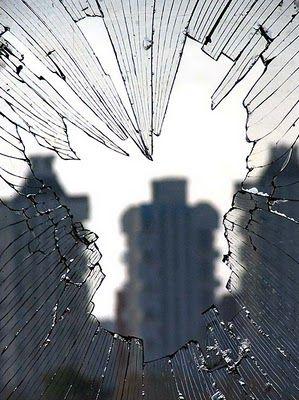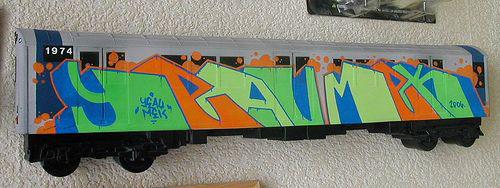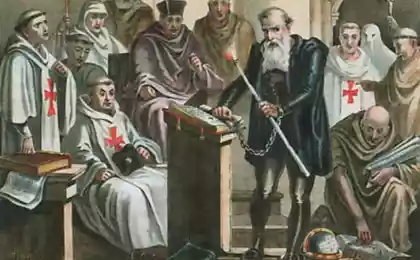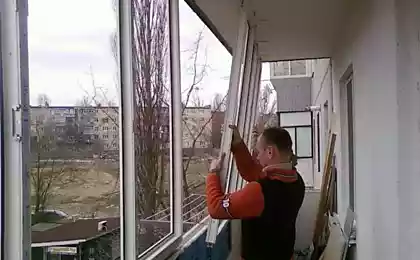892
Broken window theory
In the 1980s, New York was hell. More than 1,500 serious crimes were committed there every day. 6-7 murders a day. At night, it was dangerous to walk on the streets, and it was risky to ride the subway even during the day. Robbers and beggars in the subway were common. Dirty and damp platforms were barely lit. It was cold in the carriages, rubbish was lying under my feet, the walls and ceiling were completely covered with graffiti.

Here’s what I said about the New York City subway:
Having stood an endless line for the token, I tried to lower it into the turnstile, but found that the coin receiver was spoiled. There was a vagrant nearby: after breaking the turnstile, he now demanded that passengers give the tokens to him personally. One of his cronies leaned over the coin receiver and pulled out stuck tokens with his teeth, drooling everything. Passengers were too scared to argue with these guys: "Here, take this damn badge, what do I care!" Most people pass the turnstiles for free. It was the transport version of the Dante Hell.”
The city was in the grip of the most ferocious crime epidemic in its history.
But then the unexplained happened. Having reached a peak by 1990, crime plummeted. Over the coming years, the number of murders decreased by 2/3, and the number of serious crimes by half. By the end of the decade, there were 75 percent fewer crimes on the subway than at the beginning. For some reason, tens of thousands of nuts and gopniks stopped breaking the law.
What happened? Who pressed the magic stop faucet and what is it?
Its title is “The Broken Windows Theory.” Canadian sociologist Malcolm Gladwell, in his book Tipping Point, says:
Broken Windows is the brainchild of forensic scientists Wilson and Kelling. They argued that crime was the inevitable result of a lack of order. If the window is broken and not glazed, then those passing by decide that no one cares and no one is responsible for anything. Soon other windows will be broken, and a sense of impunity will spread across the street, sending a message to the whole neighborhood. A signal calling for more serious crimes.”
Gladwell deals with social epidemics. He believes that a person breaks the law not only (or even not so much) because of poor heredity or improper upbringing. What matters to him is what he sees around him. Context.
Dutch sociologists confirm this idea. They conducted a series of interesting experiments. Like this one. From the bicycle parking lot near the store, urns were removed and advertising leaflets were hung on the wheels of bicycles. Began to see how many people throw flyers on the pavement, and how many are ashamed. The wall of the store where the bikes were parked was perfectly clean.
Leaflets were thrown to the ground by 33% of cyclists.
Then the experiment was repeated, having previously grinded the wall with meaningless drawings.
69% of cyclists have already been littered.
Let’s go back to New York in the age of crime. In the mid-1980s, the leadership of the New York subway changed. The new director, David Gunn, started out with ... fighting graffiti. It’s not that the entire community is happy with the idea. “Boy, take care of the serious issues – technical problems, fire safety, crime ...” Don't waste our money on nonsense! But Gunn was insistent:
“Graffiti is a symbol of the collapse of the system. If you start the process of rebuilding the organization, the first thing to do is to defeat graffiti. Without winning this battle, no reforms will take place. We are ready to introduce new trains costing 10 million dollars each, but if we do not protect them from vandalism, we know what will happen. They will last one day and then they will be mutilated.”
And Gunn gave the command to protect the cars. Route by route. Composition by lineup. Every fucking car, every single day. “For us it was like a religious act,” he later said.
At the end of the routes, washing points were installed. If the car came with graffiti on the walls, the drawings were washed away during the turn, otherwise the car was decommissioned altogether. Dirty cars, from which graffiti has not yet been washed away, in no case mixed with clean ones. Gunn delivered a clear message to the vandals.
“We had a depot in Harlem where the carriages stood at night,” he said. The first night teenagers appeared and covered the walls of the cars with white paint. The next night, when the paint dried, they came and circled the contours, and a day later they painted it all. So they worked 3 nights. We waited for them to finish their “work.” Then we took the rollers and painted them all over. The boys were upset to tears, but everything was painted over from top to bottom. It was our message to them: "Do you want to spend 3 nights deforming the train?" Come on. But no one will see it.
In 1990, William Bratton was hired as Transport Police Chief. Instead of dealing with a serious case – serious crimes, he took up the fight for free riders. Why?
The new police chief believed that, like the graffiti problem, the sheer number of “hares” could be a signal, an indication of a lack of order. This encouraged more serious crimes. At that time, 170,000 passengers made their way to the subway for free. The teenagers just jumped through the turnstiles or broke through force. And if 2 or 3 people cheated the system, those around them (who would otherwise not break the law) would join them. They decided that if someone didn't pay, they wouldn't either. The problem snowballed.
What did Bratton do? He put 10 police officers in disguise near the turnstiles. They snatched the rabbits one by one, handcuffed them and lined them up in a chain on the platform. There stowaways stood until the "big catch" was completed. After that, they were escorted to a police bus, where they were searched, fingerprinted and punched through the database. Many of them had guns with them. Others have problems with the law.
“For the cops, it was a real El Dorado,” Bratton said. Every arrest was like a popcorn bag with a surprise in it. What kind of toy do I get? A gun? Knife? Got a permit? Wow, you got a murder! Pretty quickly, the bad guys got smart, left their guns at home and paid their fares.”
In 1994, Rudolph Giuliani was elected mayor of New York City. He took Bratton from the Transportation Authority and appointed him the city's police chief. By the way, Wikipedia says that it was Giuliani who first applied the Broken Windows Theory. Now we know that's not true. Nevertheless, the mayor’s merit is undeniable – he gave the command to develop a strategy throughout New York.
The police have taken a fundamentally tough stance against minor offenders. Arrested everyone who was drunk and violent in public places. Who threw empty bottles. Painting walls. Jumping through the turnstiles, begging drivers for money to wipe the glass. If someone urinated on the street, they went straight to prison.
The city’s crime rate began to fall sharply – as fast as in the subway. Police Chief Bratton and Mayor Giuliani explain: "Small and minor misconduct at first glance served as a signal for the commission of serious crimes."
The chain reaction was stopped. By the end of the 1990s, New York had become the safest metropolis in America.
The magic stop faucet worked.


Here’s what I said about the New York City subway:
Having stood an endless line for the token, I tried to lower it into the turnstile, but found that the coin receiver was spoiled. There was a vagrant nearby: after breaking the turnstile, he now demanded that passengers give the tokens to him personally. One of his cronies leaned over the coin receiver and pulled out stuck tokens with his teeth, drooling everything. Passengers were too scared to argue with these guys: "Here, take this damn badge, what do I care!" Most people pass the turnstiles for free. It was the transport version of the Dante Hell.”
The city was in the grip of the most ferocious crime epidemic in its history.
But then the unexplained happened. Having reached a peak by 1990, crime plummeted. Over the coming years, the number of murders decreased by 2/3, and the number of serious crimes by half. By the end of the decade, there were 75 percent fewer crimes on the subway than at the beginning. For some reason, tens of thousands of nuts and gopniks stopped breaking the law.
What happened? Who pressed the magic stop faucet and what is it?
Its title is “The Broken Windows Theory.” Canadian sociologist Malcolm Gladwell, in his book Tipping Point, says:
Broken Windows is the brainchild of forensic scientists Wilson and Kelling. They argued that crime was the inevitable result of a lack of order. If the window is broken and not glazed, then those passing by decide that no one cares and no one is responsible for anything. Soon other windows will be broken, and a sense of impunity will spread across the street, sending a message to the whole neighborhood. A signal calling for more serious crimes.”
Gladwell deals with social epidemics. He believes that a person breaks the law not only (or even not so much) because of poor heredity or improper upbringing. What matters to him is what he sees around him. Context.
Dutch sociologists confirm this idea. They conducted a series of interesting experiments. Like this one. From the bicycle parking lot near the store, urns were removed and advertising leaflets were hung on the wheels of bicycles. Began to see how many people throw flyers on the pavement, and how many are ashamed. The wall of the store where the bikes were parked was perfectly clean.
Leaflets were thrown to the ground by 33% of cyclists.
Then the experiment was repeated, having previously grinded the wall with meaningless drawings.
69% of cyclists have already been littered.
Let’s go back to New York in the age of crime. In the mid-1980s, the leadership of the New York subway changed. The new director, David Gunn, started out with ... fighting graffiti. It’s not that the entire community is happy with the idea. “Boy, take care of the serious issues – technical problems, fire safety, crime ...” Don't waste our money on nonsense! But Gunn was insistent:
“Graffiti is a symbol of the collapse of the system. If you start the process of rebuilding the organization, the first thing to do is to defeat graffiti. Without winning this battle, no reforms will take place. We are ready to introduce new trains costing 10 million dollars each, but if we do not protect them from vandalism, we know what will happen. They will last one day and then they will be mutilated.”
And Gunn gave the command to protect the cars. Route by route. Composition by lineup. Every fucking car, every single day. “For us it was like a religious act,” he later said.
At the end of the routes, washing points were installed. If the car came with graffiti on the walls, the drawings were washed away during the turn, otherwise the car was decommissioned altogether. Dirty cars, from which graffiti has not yet been washed away, in no case mixed with clean ones. Gunn delivered a clear message to the vandals.
“We had a depot in Harlem where the carriages stood at night,” he said. The first night teenagers appeared and covered the walls of the cars with white paint. The next night, when the paint dried, they came and circled the contours, and a day later they painted it all. So they worked 3 nights. We waited for them to finish their “work.” Then we took the rollers and painted them all over. The boys were upset to tears, but everything was painted over from top to bottom. It was our message to them: "Do you want to spend 3 nights deforming the train?" Come on. But no one will see it.
In 1990, William Bratton was hired as Transport Police Chief. Instead of dealing with a serious case – serious crimes, he took up the fight for free riders. Why?
The new police chief believed that, like the graffiti problem, the sheer number of “hares” could be a signal, an indication of a lack of order. This encouraged more serious crimes. At that time, 170,000 passengers made their way to the subway for free. The teenagers just jumped through the turnstiles or broke through force. And if 2 or 3 people cheated the system, those around them (who would otherwise not break the law) would join them. They decided that if someone didn't pay, they wouldn't either. The problem snowballed.
What did Bratton do? He put 10 police officers in disguise near the turnstiles. They snatched the rabbits one by one, handcuffed them and lined them up in a chain on the platform. There stowaways stood until the "big catch" was completed. After that, they were escorted to a police bus, where they were searched, fingerprinted and punched through the database. Many of them had guns with them. Others have problems with the law.
“For the cops, it was a real El Dorado,” Bratton said. Every arrest was like a popcorn bag with a surprise in it. What kind of toy do I get? A gun? Knife? Got a permit? Wow, you got a murder! Pretty quickly, the bad guys got smart, left their guns at home and paid their fares.”
In 1994, Rudolph Giuliani was elected mayor of New York City. He took Bratton from the Transportation Authority and appointed him the city's police chief. By the way, Wikipedia says that it was Giuliani who first applied the Broken Windows Theory. Now we know that's not true. Nevertheless, the mayor’s merit is undeniable – he gave the command to develop a strategy throughout New York.
The police have taken a fundamentally tough stance against minor offenders. Arrested everyone who was drunk and violent in public places. Who threw empty bottles. Painting walls. Jumping through the turnstiles, begging drivers for money to wipe the glass. If someone urinated on the street, they went straight to prison.
The city’s crime rate began to fall sharply – as fast as in the subway. Police Chief Bratton and Mayor Giuliani explain: "Small and minor misconduct at first glance served as a signal for the commission of serious crimes."
The chain reaction was stopped. By the end of the 1990s, New York had become the safest metropolis in America.
The magic stop faucet worked.
























